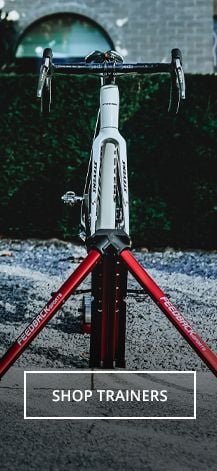Tire and Tube Replacement
Whether you're replacing well-worn tires with shiny new ones or fixing a roadside flat, knowing how to remove and reinstall tires and tubes is an important bike maintenance skill. We'll focus here on swapping out old tires for new ones at home, but the skills carry over to flat repair as well.
You'll need tire levers, a pump (a floor pump is best for inflating to a good pressure), and of course your new tires and tubes.
Removing Your Tire
- Loosen your bike's brakes using the quick release mechanism.
- Loosen the wheel skewer and remove your wheel.
- Open the valve and let the air out of the tire if it's not already flat.
- Insert a tire lever between the rim and the tire bead and use it to gently lever the tire over the edge of the rim. Be careful not to hurt your rim! Insert another tire lever a few inches away and use it to pop the tire over the rim; after that, removal should be easy. Especially stubborn tires may require a third lever; in these case, insert the first two levers 6-8" apart, and then insert the third lever between the first two.
- When you've got one side of the tire all the way off of the rim, you can reach in and carefully pull the tube out. If you plan to reuse the tube, take care not to damage it when you pull it out.
- Remove the other side of the tire.
Puncture Repair
In the event of a puncture, it is extremely helpful to determine what caused the initial puncture. You don't want to get your new tube and tire installed just to have that tire go flat immediately because the cause of the flat wasn't fixed!
Locating the puncture on the tube often offers clues to what caused it. A single hole on the outside of the tube usually indicates a simple puncture by road debris; in that case, it's important to make sure you remove the source of the puncture from the tire! It can be helpful to always line up the logo on your tire with your tube's valve stem so that you know where to look on the tire.
Two holes close together in your tube reveal a "snakebite" or "pinch flat." A hole near the valve stem may be caused my rough edges in your rim around the valve hole.
Carefully examine your tire (inside and outside), tube, rim, and rim strip. If your rim strip is worn, consider replacing it. Thicker tires can be tricky to examine, as debris can become embedded in the tire, not visible from either side, but sharp enough to puncture the tube when weight is applied. Pinpointing the cause of the puncture will help prevent future problems, though.
If the puncture in your tube is easily patched, you can patch it and continue to use it for a long time.
Installing Your New Tire
- Install one side of the tire on the rim. Pro tip: Install the tire with the logo centered over the valve hole. This makes punctures easier to locate, and it just looks good!
- Slightly inflate the tube, insert the valve in through the valve hole (make sure it's perpendicular to the rim!), and tuck the tube into the tire.
- Install the other side of the tire. Start from the side of the wheel opposite the valve, and carefully work the bead onto the rim, making sure not to pinch the tube as you do so. Work around in either direction towards the valve. The last bit might be tricky, but do your best to work the tire onto the rim using just your hands. If you really can't get the last bit over the rim, you can use a tire lever to carefully lever the tire over the rim, taking care, again, not to pinch the tube.
- To make sure the tube and tire are properly seated, squeeze the tire all the way around, checking to make sure the tube isn't pinched under the bead.
- Slowly inflate the tire to your desired pressure. Keep an eye on the tire to ensure it maintains its shape and maintains engagement with the rim.
- Re-install your wheel on your bike, tightening the skewer securely.
- Re-engage your brakes, and you're ready to ride!
Feel free to contact us at (503) 917-0156 or [email protected] with any questions!



















